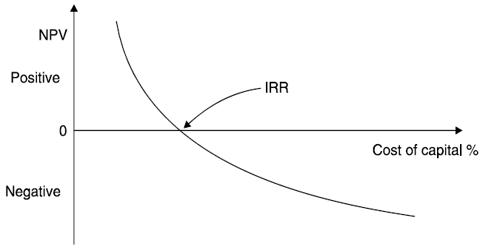Balance Sheet of General Insurance Company
General Insurance Company are magical creatures that, in the hands of a skilled operator, perform alchemistic feats and literally mint money. However, reading and understanding their financial statements are a little difficult, so let’s try to break this task down into bite-sized chunks. First we’ll get familiar with the terms and calculations; later on, we’ll see how the statements are linked and flow into each other.
Balancing Sheet Act
Insurance companies are balance-sheet-driven businesses, so we’ll start here with the assets. Let’s look at the 2005 balance sheet assets of two auto insurers, Progressive and Mercury General .
Preface
Insurance is an invisible trade. Being an intangible product, it embodies a pledge of protection. By default, insurance transaction relates to assumption of risk—that is reflected in collection of premium—and later paying off claims as and when arise and set aside some money as a residual for future servicing to policyholders. Its quality depends on a visible assurance of the ability to redeem this pledge, as much as on the intrinsic worth of the protection provided. It may sound simple but in reality, it is far more complex. Insurance companies are balance-sheet-driven businesses. Investors use balance sheets to evaluate a company’s financial health. In theory, the balance sheet provides an honest look at a company’s assets and liabilities, enabling investors to make a determination regarding the firm’s health and compare results against the firm’s competitors. Because assets are better than liabilities, companies want to have more assets and fewer liabilities on their balance sheets.
The sine qua non of insurance operation is to service the capital adequately and appropriately. If the adequacy of servicing relates to the probability of increase in shareholder’s value, its appropriateness concerns claims paying ability for which the capital is deployed.
Insurance industry is capital intensive and claims sensitive. Adequacy of capital for a successful insurance operation is a must. Capital is a scarce commodity and it comes at a cost. Since debt capital appearing on the balance sheet involves constraint and cost, insurers often tend to increase their net worth to transact insurance business in a frequently competitive market by taking recourse to ‘Off-Balance Sheet Capital’ obtained through reinsurance and further down the line by retrocession.
The complexity to read the balance sheet of an insurance company arises because of its significant reliance on ‘Off-Balance Sheet Capital’. Regulatory compliance requires an insurance company to arrange first a proper risk transfer mechanism which is known as reinsurance facility for shedding off the additional exposure beyond its limit of retention on any one risk. This is known as ‘Off-Balance Sheet Capital’ as this is a kind of capital that is not visible on the balance sheet but remains obscured that provides financial strength to the company to assume more risks to augment its business.
The balance sheet must follow the following formula:
Assets = Liabilities + shareholders’ equity
The balance sheet is a snapshot at a single point in time of the company’s accounts—covering its assets, liabilities and shareholders’ equity. The purpose of the balance sheet is to give users an idea of the company’s financial position along with displaying what the company owns and owes. There are many instances around the world where insurance companies have failed following inadequacy of capital and inefficient management. A classic case in point is the insolvency of a giant insurance company in Australia named ‘HIH Insurance Ltd’, a $10 billion company going into bust, as reported to the leading daily in Australia, The Sydney Morning Herald in April 2003.
Focusing areas
Whether an insurance company is functioning with full financial strength or not, may be known by focusing on the following points:
- Capital base in relation to volume & composition of turnover
- Competence & integrity of management
- Adequacy of technical reserves
- Solvency margin
- Accuracy of valuation of assets & liabilities
- Adequacy of reinsurance program & security of reinsurers
Of all the above elements of focusing areas, perhaps far more important is to identify the early warning signals on the problem known as security default or failures of insurers to pay just debts. It is also likely that the failures of insurers to meet their financial obligations may originate from the insufficient mode of risk transfer mechanism caused by the breakdown of delicately balanced international reinsurance market place. It is therefore not surprising that regulatory authorities like IRDA (Insurance Regulatory and Development Authority) or SEBI (Securities and Exchange Board of India) in India are getting increasingly concerned over the quality of reinsurance facility arranged by domestic insurers within their jurisdiction. As the general public or insured public do not have access to the foregoing information, they will have to rely entirely on the published figures. It would therefore be relevant to focus on some of their function in terms of (a) Quantitative analysis and (b) Qualitative analysis as follows:
- Management hierarchy
- Underwriting philosophy
- Continuity
- Reinsurance program/retrocession arrangement
- Level of retention on any one risk
- Pace of premium growth
- Underwriting result
- Liquidity & cash flow
- Magnitude of capital & reserves
- Asset profile
- Return on equity
- Adequacy of technical reserves
While applying the above criteria to analyse results of ‘key ratios’ and ‘sensitivity tests’, it is important to see the trend of results over few years and evaluate them against comparable markets so that one can review moving trends not only over a reasonable span of time but also within the comparable group of companies within the country they operate.
Case study—The New India Assurance Company
To comprehend the essence of foregoing, it may be pertinent to follow a case study by reference to the published results of a large insurance company in India. The case in reference is the New India Assurance Company, often known as the one ‘Born to lead’ as it is said to have set new benchmarks year after year. According to the Board of Directors’ report for the financial year 2010-11, New India is the first company in India to cross Rs. 70 billion mark of the net premium in the Indian insurance market.
The annual report of the company for FY10-11 contains 186 pages and is too complicated. It is naturally very difficult to glean the most relevant data to assess the company’s financial health and future trend. Therefore, it is necessary to make some simplifications by grouping the data in a more comprehensible form. However, there is a slight difference in grouping financial items in form of revenue and expenses to arrive at profit or loss for an insurance company opposed to manufacturing or trading operations. The premium income received from policyholders during FY10-11 is not the real income to arrive at profit or loss. This is because some policies issued during the current year may yet to run till next year and so some adjustment is to be made to keep provision for policyholders to the extent of premium that is yet to expire. This is known as adjustment for ‘unexpired premium’.
Likewise all claims that are reported during the period are not claims expenses. This is because some claims may not have been settled during the year and remained outstanding or some claims may not have been reported yet but have already incurred during the period or some are reported inadequately due to lack of information for which some ‘actuarial’ adjustment is made. This adjusted figure in claims is called ‘incurred claims’ for the accounting purpose.
The company in question derives its revenue from domestic as well as overseas operations against which part of the money is paid to reinsurers towards cost of protection against catastrophe losses or routine claims during the period under review. This is known as premium ceded to reinsurers and thus net income is taken into the books after adjustment of unearned premium.
Therefore, operating results of the company for the year ended 31 March 2011 may be grouped as follows to give a bird’s eye view on its operation:
Performance review
(Figures in rupees billion)
| Operating results | 2010-11 (CY) | 2009-10 (PY) |
| Gross global premium | 96.92 | 83.46 |
| Premium ceded for risk transfer | (25) | (23.43) |
| Net premium income | 71.92 | 60.03 |
| Adjustment for unearned premium | (7.19) | (2.92) |
| Net earned premium | 64.73 | 57.11 |
| Net incurred claims | (65.24) | (51.32) |
| Acquisition cost & management expenses | (25.92) | (22.98) |
| Net underwriting results | (26.43) | (17.19) |
| Investment income earned | 22.32 | 20.78 |
| Net profit or (Loss) | (4.11) | 3.59 |
| Adjustment for income tax paid or refunds | (0.1) | 0.31 |
| Dividend proposed | NIL | (0.85) |
| Fund transferred to reserves | (4.21) | 3.05 |
Analysis of results
The company’s overall portfolio comprises of domestic business of Rs. 70.97 billion and overseas business of Rs. 14.67 billion totalling Rs. 82.25 billion of gross direct. Added to it is another Rs. 14.67 billion from ‘reinsurance accepted’ business producing a gross income of Rs. 96.92 billion reflecting an increase of 16% over the corresponding period of last year. Growth notwithstanding, the underwriting results produced a deficit of Rs. 26.43 billion during the period due to adverse claim experience from health insurance, motor third party claims and catastrophe losses from Japan Tsunami, New Zealand earthquake and Muscat Typhoon. The negative results during the period under review may also be due to increased reserve strain of Rs. 4.27 billion due to additional reserve created for unexpired risk during 2010-11. The company has decided right thing by not proposing any dividend during the current year following net loss in its operations. The ultimate net effect of the negative results was reflected in dwindling of accumulated reserves to service policyholders and shareholders during the years to follow.
Balance sheet
The company has reported its financial state of affairs in an abridged form as per Schedule VI–Part A of the Companies Act, 1956 showing its total assets of Rs. 397.59 billion which equates to its total liabilities during the period under review. However, this figure may be regrouped in form of various assets that will demonstrate how the company is servicing its shareholders and policyholders as well as to the reinsurers that offered protection against various losses. The state of liquidity to service claims of policyholders can also be ascertained from the balance sheet figures that will indicate the efficiency of the company to meet its liability as and when called for.
| Assets: | Net fixed assets | 1.57 |
| Investments | 284.78 | |
| Loans & advances | 55.81 | |
| Cash & bank balances | 53.04 | |
| Deferred assets | 2.39 | |
| Total assets | 397.59 | |
| Liabilities: | Shareholders’ fund | 238.43 |
| Policyholders’ fund | 127.91 | |
| Fund for Reinsurers | 13.26 | |
| Other creditors | 8.02 | |
| Total liabilities | 397.59 |
The foregoing analysis of financial statement indicates the company’s ability to meet its obligations to policyholders. Total debt owed by the company is Rs. 159.16 billion against net worth of Rs. 238.43 billion showing a debt-equity ratio of 67%. This means for every Rs.100 of liabilities, the company has got liquid assets worth Rs.67 as on 31 March 2011. It is the responsibility of any company to service its capital as well as external debtors that indicate its financial strength during a particular period. In the instant case, the relationship between shareholders’ fund and policyholders’ fund is 1.86: 1. This means the company has got sufficient fund in terms of net worth to meet its full obligations to policyholders at any given time, although its net worth is reported to have declined by Rs. 3.19 billion during 2011 against last year. There may be an immediate necessity to pay off the liability on outstanding claims for Rs. 89.56 billion and the amount due to reinsurers for Rs. 13.26 billion totalling an amount of Rs.102.82 billion. The company has quick assets to meet this immediate obligation in terms of cash and bank balances in the region of Rs. 53.04 billion and short terms loans and advances of Rs. 55.81 billion totalling a fund of Rs. 108.85 billion. This is what is known in financial parlance as acid rest ratio which is a relationship between quick assists and immediate liability. This ratio shows a figure of 1:1.05 indicating an availability of immediate fund of Rs. 105 for every Rs. 100 of liability.
Conclusion
The published figures of the company’s financial state of affairs as above need to be studied in conjunction with auditors’ comments and remarks together with the report of the board of directors in order to fully comprehend the growth strategy of the company on its attempt to stay ahead of its competitors.
The way its net retention is managed for different classes of business, is an indicative of the company’s strength well enough for the risk financing from its own resources as the reinsurance ceded is varying in a range of 16% to 17% over the period which strongly demonstrates that the company is not trading on equity. The directors’ report indicates that the company has entered a phase of consolidation with a projected moderate growth of its business mix. The overall portfolio for the period under review is well balanced between property, marine and casualty as none of the individual classes is out of balance.
The global business of the company has got a significant portion of its income coming from its network of 32 foreign operations in 20 countries around the world. During 2009-10, foreign operations exhibited an underwriting profit of Rs. 1.01 billion whereas during the current year, it has produced a negative result, a loss of Rs.1.82 billion. As previously explained, this typical result was largely due to catastrophe losses from Australia, New Zealand and Muscat, etc.
The company’s foreign operations in the region like Caribbean, Australia and Japan among others, which are much prone to natural disasters, are likely to produce very heavy losses. It may therefore be prudent to explore the opportunity to provide additional funding for risk transfer on market franchise basis within this region to obtain a ‘sleep easy’ cover against future losses.
(The article hereon is purely an academic exercise and therefore does not reflect on the efficiency or otherwise of the company’s management or others. It is not a financial advice either. The author is a Ph.D, FII, ANZIIF (Fellow) CIP. He is a former Underwriter of GIO Re Sydney and is currently the Director of International Business of an international firm Kaden Boriss Lawyers Australia. Kaden Boriss has got offices in Canberra, Sydney, Bangkok and Delhi.)
Disclaimer: Any content, views, opinions and/or responses on any of the pages of www.indiainfoline.com, expressed or submitted by the creators, contributors, sponsors or advertisers, other than the content provided by IIFL, are solely the views, opinions and responsibility of the person submitting them and do not necessarily reflect the opinions of IIFL. IIFL does not warrant the accuracy, completeness or usefulness of the information. Nothing contained in or provided through this page is intended to constitute advice or solicitation for any investment/financial products or services, neither does it constitute an offer for the purchase or sale of any financial instrument or confirmation of any transaction.
IIFL does not hold any responsibility for the consequences of any action or omission thereof based on any information related to investment/financial products or services that may be available on /through this page. Any reliance you place on such information is strictly at your own risk. We may include links to other web pages, but these links are not an endorsement of those pages, products or services. IIFL is not responsible for the content of any web site by other operators. Under no circumstances will IIFL be responsible or liable in any way for any content, including but not limited to, any errors or omissions in the content, or for any injury, death, loss or damage of any kind by any person as a result of any content communicated whether by IIFL or a third party. In no event shall IIFL be liable for any special, indirect or consequential damages or any damages whatsoever resulting from loss of use, data or profits arising out of or in connection with the availability, use or performance of any information communicated on this page.
















